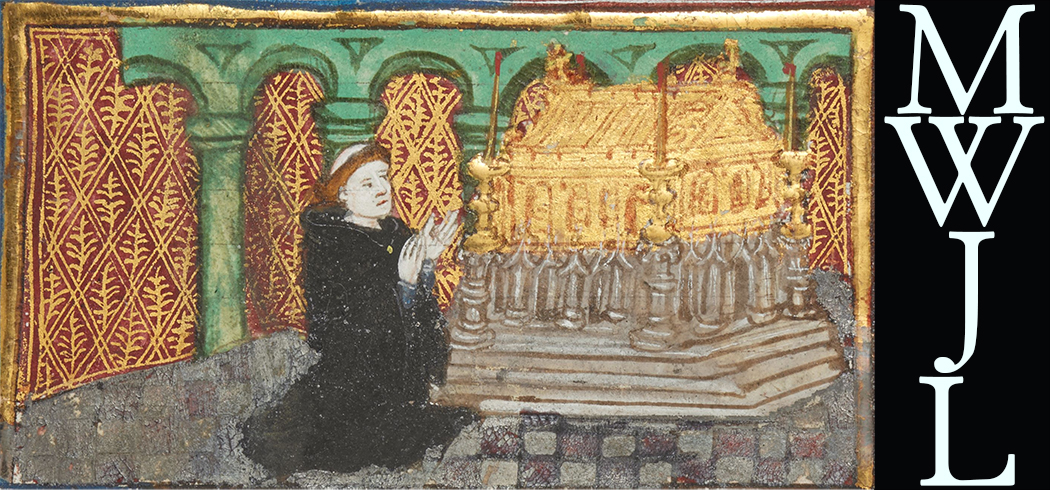 A Mumming at Windsor:
British Library Additional 29729 Verses
A Mumming at Windsor:
British Library Additional 29729 Verses
HomeAbout the ArchiveAbout John LydgateWorksManuscriptsAbout this ManuscriptEditorial ApparatusContactVisualization
Folio 144 Verso
Compare Witnesses: •
the lord which is / called on two and thre •
his eyen of mercy / caste on cloudovee •
shadde his grace / of gostly influence •
¶
that he shuld passe / from paganymes lawe •by prescyence / which that ys deuyne •
his hert all holly / and him sellfe with drawe •
ffrom his ydoles / And all hys rytes fyne •
whan heuenly grace / did vpon hym shyne •
by mean only / and by deuoute prayer •
of saint cloote / most goodly and entier •
¶
hir hertely loue / hir meditacyons •hir stedfast hope / hir holy orisounes •
hir conuersacyoun / most contemplatyffe •
stynt in ffraunce of maumetrye þe stryffe •
causing þe lawe / most souerein of vertue •
¶
hir meryte caused / and hur parfyt entent •that crystes feytħ / aboute ther did spred •
whan that an aungell / was from heuen sent •
vnto an hermyte of parfyt lyffe in dede •
presented it / who so can take hede •
a sheld of azure / moste soueraygne by deuise •
and in the felde of gould thre floure delyse •
Notes
-
The scribe had some difficulty here and the fifth and eighth glyphs have been written over, but the word can be determined ↩
-
There is a slight mark between the c and h indicating the addition of a glyph here. It lacks, however, any sort of arrow indicator. ↩
-
in most instances the bar over a "u" or "n" indicates a suspension, but here the word "ihesu" is spelled out in full and the only likely suspended letter, an "s" at the end," would break the rhyme with "vertue" above. Trinity R.3.20, the other extant witness, also spells out "Ihesu" here, so this suspension mark could be support for the idea that both manuscripts are copied from a lost exemplar rather than one copied from the other. ↩





